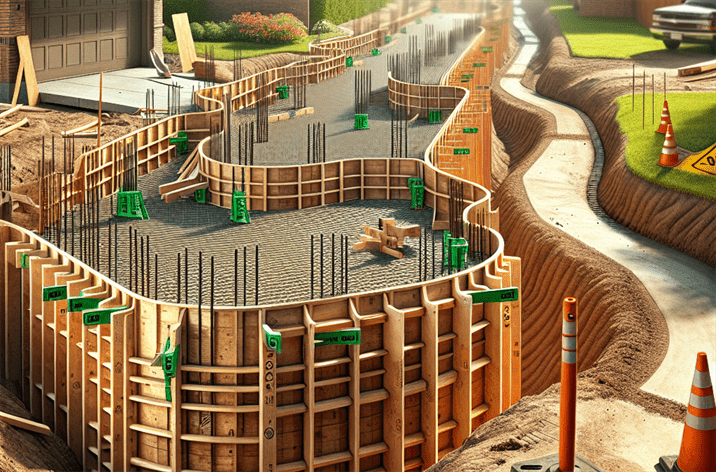Best Stakes and Lath for Construction Purposes
Introduction
Did you know that the humble wooden stake has been a fundamental tool in construction for centuries? When it comes to the Best Stakes and Lath for Construction, these simple yet effective tools have played a critical role in ensuring the accuracy and efficiency of construction projects, from laying foundations to marking boundaries. Stakes and lath are not just tools; they are the backbone of construction, enabling professionals to translate blueprints into reality. In this article, we will explore the importance of stakes and lath in construction, their historical significance, and how they contribute to project success.
Construction tools like stakes and lath have evolved over time, with their origins dating back to ancient civilizations. As societies progressed, so did the methods of construction, and with it, the tools that supported these efforts. Today, the use of stakes and lath is integral to achieving precise measurements and maintaining the structural integrity of buildings and other constructions.
In this comprehensive guide, you can expect to learn about the definitions and applications of Best Stakes and Lath for Construction Purposes, the benefits of using these tools, common challenges faced in their use, and best practices for selecting and employing them effectively. Whether you are a seasoned contractor or a DIY enthusiast, understanding the role of stakes and lath can significantly improve your project outcomes.
For additional insights, check out our guide on affordable stakes and lath for construction needs.
What is Best Stakes and Lath for Construction Purposes?
Definition
Best Stakes and Lath for Construction Purposes refer to high-quality materials and tools used to ensure accurate alignment and measurement in construction projects.
Stakes are typically made from wood, metal, or plastic and are driven into the ground to serve as reference points for various construction activities. They can be used to mark property lines, outline building perimeters, and assist in leveling and grading tasks.
Lath, on the other hand, is thin strips of wood or metal that are often used to provide support for plaster, stucco, or as a framework for various construction applications. Together, stakes and lath help create a framework that guides construction workers in accurately translating plans into physical structures.
Historical Context
The use of construction stakes and lath can be traced back thousands of years. In ancient Egypt, workers used wooden stakes to layout the pyramids, ensuring each stone was placed with precision. Throughout history, as construction techniques evolved, so did the tools. For instance, in medieval Europe, craftsmen relied on wooden lath for supporting plaster on walls, a practice that laid the groundwork for modern drywall techniques.
Today, advances in technology have led to the development of more durable materials and innovative designs, enhancing the effectiveness of these traditional tools. Nevertheless, the essence remains the same: to provide a reliable means of achieving accuracy in construction.
The Importance of Best Stakes and Lath for Construction Purposes
Selecting the right stakes and lath is crucial in modern construction for several reasons:
- Accuracy: Properly placed stakes and lath ensure that measurements are precise, minimizing errors that could lead to costly mistakes.
- Efficiency: Using the right tools allows for quicker project completion, as workers can easily align and measure without guesswork.
- Safety: Accurate layout helps avoid structural issues that could pose safety hazards during and after construction.
Best Stakes and Lath for Construction Purposes in the Context of Surveying
In surveying, stakes and lath are indispensable. Surveyors use them to mark specific points on a site, ensuring that every aspect of the construction aligns with the planned layout. Accurate surveying is critical for ensuring that buildings are placed correctly, foundations are level, and property lines are respected.
Key Players or Contributors
Several manufacturers and innovators have contributed to the evolution of stakes and lath. Companies specializing in construction materials continuously explore new ways to improve durability and ease of use, making their products more efficient and reliable in various conditions.
For more on effective construction alignment, check out our detailed guide.

How Does Best Stakes and Lath for Construction Purposes Work?
The Mechanics of Best Stakes and Lath for Construction Purposes
The effective use of stakes and lath in construction involves a few key steps:
- Planning: Before beginning any project, it’s essential to have a clear plan that outlines where the stakes will be placed. This typically involves consulting blueprints and surveying data.
- Placement: Once the planning phase is complete, workers drive the stakes into the ground at specified intervals to mark boundaries and reference points. The lath is then positioned to connect these points, creating a framework for measurements.
- Measurement: Using levels and measuring tools, construction workers can ensure that the layout is accurate. This involves checking the height and alignment of the stakes and lath regularly.
- Adjustment: If any discrepancies are found, adjustments can be made on the spot, ensuring that the project remains on track.
Technological Foundations of Best Stakes and Lath for Construction Purposes
Modern technology has transformed how construction professionals use stakes and lath. Digital tools, such as laser levels and GPS technology, allow for even greater precision in layout and measurements. These advancements help reduce the time needed for setup and ensure that projects are completed to the highest standards.
For example, laser-guided stakes can automatically adjust for uneven terrain, providing real-time feedback on placement accuracy. This technology not only enhances efficiency but also minimizes the risk of human error.
Real-World Applications of Best Stakes and Lath for Construction Purposes
The applications of stakes and lath in construction are vast. Here are some common uses:
- Foundation Layout: Stakes are used to outline the footprint of a structure, ensuring that foundations are poured accurately.
- Landscaping: When marking out gardens or outdoor structures, stakes help define boundaries and ensure proper spacing.
- Fencing: Lath and stakes are essential for marking the location of fence posts, ensuring a straight line and uniform spacing.
- Road Construction: In roadwork, stakes mark the edges of the roadway and help in grading and leveling the surface.
To learn more about the benefits of using stakes and lath in construction, check out our focused article on this topic.
Benefits of Using Best Stakes and Lath for Construction Purposes
The benefits of using stakes and lath in construction extend beyond accuracy and efficiency. Here are some additional advantages:
- Cost-Effectiveness: Using high-quality stakes and lath ensures longevity, reducing the need for frequent replacements and repairs.
- Versatility: These tools can be utilized in various construction scenarios, from residential builds to large-scale commercial projects.
- Environmental Impact: Many manufacturers now offer eco-friendly options for stakes and lath, catering to the growing demand for sustainable construction practices.
- Enhanced Communication: Clearly marked sites with stakes and lath improve communication among team members, making it easier to understand project requirements and layouts.
Common Challenges in Using Best Stakes and Lath for Construction Purposes
While stakes and lath are essential tools, they come with their own set of challenges:
- Weather Conditions: Extreme weather can affect the placement and stability of stakes, leading to potential inaccuracies.
- Material Quality: Using low-quality materials can result in premature wear and failure, impacting project timelines and budgets.
- Human Error: Despite technological aids, human error in measurement or placement can still occur, underscoring the importance of proper training and attention to detail.
To mitigate these challenges, it’s crucial to invest in high-quality materials and prioritize training for workers in best practices for using these tools. For practical tips on best practices for using stakes and lath in construction, check out our detailed guide.
Conclusion
In conclusion, Best Stakes and Lath for Construction Purposes are indispensable tools in the construction industry. From their historical roots to their modern applications, these tools are essential for ensuring accuracy, efficiency, and safety on job sites. Understanding the mechanics of how to use them effectively can lead to successful project outcomes and a smoother construction process.
As you embark on your next construction project, remember that the right tools—like stakes and lath—are just as important as skilled labor. By investing in quality materials and adhering to best practices, you can enhance your project’s success and longevity.
Explore our range of top-quality wooden stakes for construction measurements to find the perfect tools for your next project. Understanding the value of these tools will not only ensure project accuracy but also contribute to the overall success of your construction endeavors.
Resource Links:
1. Construction Dive – An overview of the types of stakes and laths used in construction, including materials and applications.
2. The Balance – A detailed guide on the best practices for selecting stakes and laths for various construction projects.
3. Home Depot – Tips on using stakes and laths effectively in landscaping and construction to ensure accurate measurements and stability.

